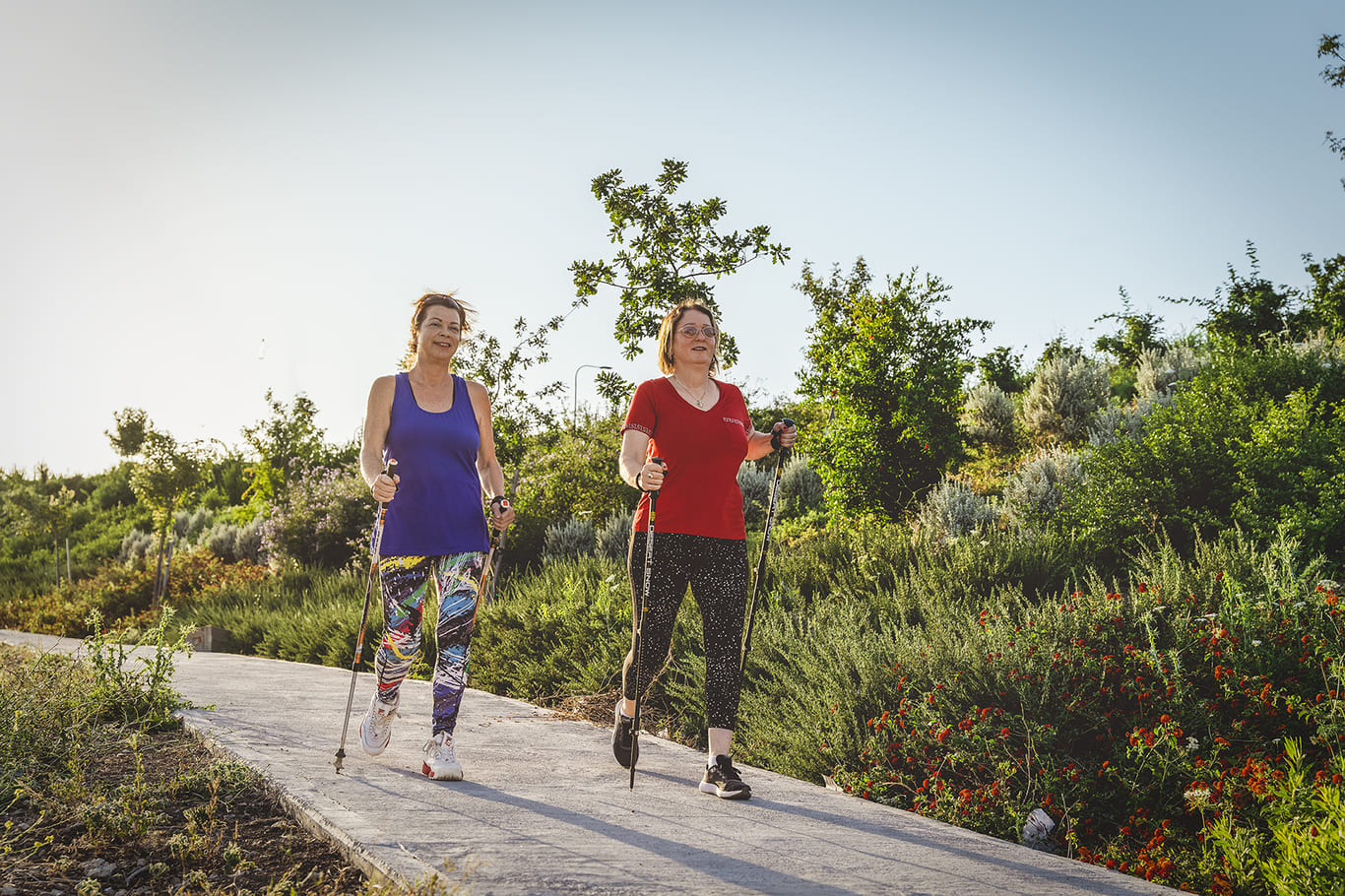Physical Exercise
Physical activity contributes to improved health, especially of people at the age of 65 and older. Physical activity helps prevent heart diseases and various types of cancer and improves daily cognitive and mental function.
Physical activity in older age has many benefits:
- Improves physical fitness and muscle strength
- Enhances bone strength and reduces the risk of thigh or vertebral fractures
- Improves the function of the cardiovascular and respiratory systems
- Decreases the risk of hypertension, coronary heart disease, stroke, diabetes, various types of cancer, depression, dementia, etc.
- Improves balance and coordination, and reduces the risk of falls
- Weight loss
- Improves joint suppleness and movability
- Improves concentration
- Improves mood and overall feeling
- Improves independent functional ability
- Maintains mobility and prevents disabilities
Common Myths About Exercise in Older Adults
| Myth | Fact |
|
I’ve never exercised before. It’s too late to start and make a difference now. |
It’s never too late! At any age, you can benefit from physical activity and strength training. |
| Strength training and lifting weights will harm my joints. | Weight training strengthens the muscles around your joints and helps protect and improve joint health. |
| Exercise increases my risk of falling. | Strengthening your muscles improves balance and reduces the risk of falls. |
| I’m too old to lift weights. | Older adults respond well to strength training and weightlifting, just like younger people. |
How to include physical activity in the daily routine of older adults
The World Health Organization (WHO) advises adults 65 and older to stay physically active. Depending on your needs, you can choose from the following types and levels of activity:

Moderate-intensity activity
xamples include aerobic activity like brisk walking that increases your breathing and heart rate but still lets you talk.
Recommended amount: Aim for at least 30 minutes a day, adding up to 150–300 minutes a week.

High-intensity activity
Examples include vigorous activity like running or swimming, where your heart rate and breathing rise, and it’s tough to speak in full sentences without gasping for air.
Recommended amount: Aim for at least 15 minutes a day, totaling 75–150 minutes a week.

Mixing moderate- and vigorous-intensity activity
What should the physical activity include?
- Cardiovascular endurance: any exercise that elevates your heart rate and breathing, such as walking, jogging, swimming, cycling
- Exercises for muscle strengthening (for the leg, waist, back, abdomen, chest, shoulders, and arm muscles): to enhance the effort it is recommended to perform “resistance” exercises using weights or bands, or bodyweight working against gravity (such as pushups)
- Steadiness and balance exercises: exercises that simulate loss of balance. For example, standing on one foot while holding a chair, standing up from sitting down, different walking techniques, such as heel to toe walk, walking on heels, walking on toes, or Tai Chi exercises. These exercises should be performed slowly and in a controlled manner, while maintaining safety.
- Exercises to improve flexibility and posture: exercises designed to maintain muscle length, while keeping proper posture
Attention
Attention
- Physical activity is safe for most people, at any age and in almost any health condition, and can be part of your daily routine.
- Any physical activity, even a small amount, is better than none.
- Combine regular physical activity with a healthy diet and plenty of water.
- Consult your doctor about the type of activity and frequency that’s right for you.

















